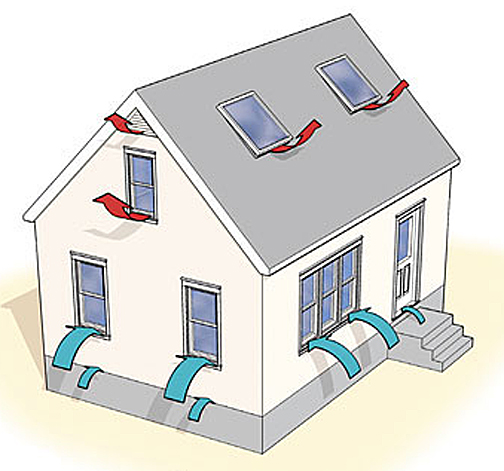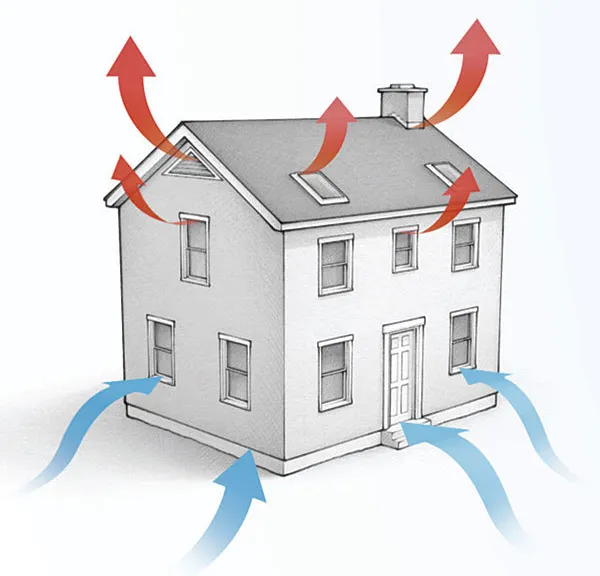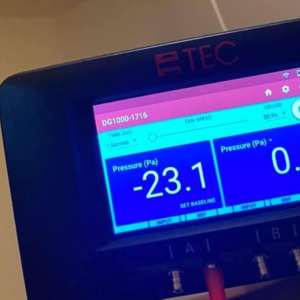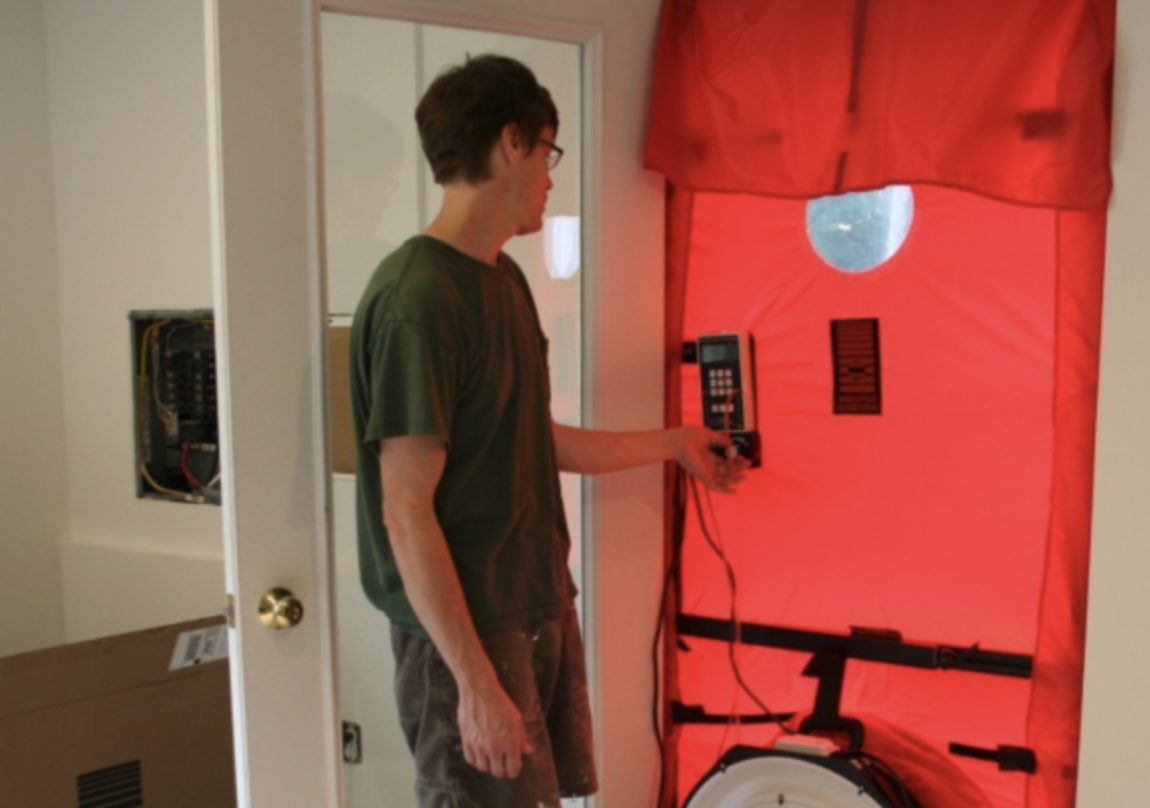
Image Credit: Fine Homebuilding
When it comes to understanding heating systems, most of us are comfortable with the basics. To warm up your house on a cold day, you need a source of heat in your living room — say, a wood stove or a radiator. To keep the heat in your house, you need insulation.
That’s the way most builders understood heating from 1935 to 1980. Somewhere around 1980, however, building scientists began to realize that the old picture was imperfect.
We now know what was missing from the old picture: an understanding of air pressure. A house is a dynamic system, and that system is greatly affected by air pressures inside and outside the home. Forces affecting the performance of the home include wind, the stack effect, and many different types of fans. These forces operate in buildings, and all buildings include leaks in their thermal envelopes. Moreover, most homes have ducts with leaky seams. Finally, many of these ducts are partially indoors and partially outdoors.
If you put all these factors together, you realize that you can’t understand home performance without understanding the effects of air pressure.
What happens when the furnace comes on?
Building scientists use a variety of techniques to measure air leakage through a home’s thermal envelope. Air leaks faster on cold days than mild days (because the stack effect is stronger when the outside temperature is cold), and it also leaks faster on windy days than on still days. No surprises there.
Let’s say that technicians are studying a typical American home. They are measuring the air leakage rate (the infiltration and exfiltration rate through the home’s thermal envelope) while the furnace is off. They get a reading. Suddenly, the furnace turns on, and the technicians notice the air leakage rate has suddenly increased dramatically — for example,…
Weekly Newsletter
Get building science and energy efficiency advice, plus special offers, in your inbox.

This article is only available to GBA Prime Members
Sign up for a free trial and get instant access to this article as well as GBA’s complete library of premium articles and construction details.
Start Free TrialAlready a member? Log in















3 Comments
Nice article. Maybe add
Nice article. Maybe add something about summer/AC stack effect (small but present) and the effect of pressure and the resulting flow on partition moisture.
Response to Jon R
Jon,
As you probably know, in an air conditioned building, the stack effect reverses during the summertime. That means (at least in theory) that hot outdoor air will enter a house through ceiling cracks, while cold indoor air will escape through cracks near the lowest part of the house.
To some extent, this will happen as the theory proposes, at lease on windless days. In practice, however, this stack effect is weak -- since the summertime delta-T is smaller than the wintertime delta-T -- and is therefore easily ovewhelmed by the effect of wind and various indoor fans.
The basic lesson is that sealing cracks (improving the tightness of the home's thermal envelope) has summertime benefits as well as wintertime benefits.
I think that you are also making the point that interior partitions are often connected with basements and attics through hidden air pathways. That's true. This fact results in several phenomena, including:
(a) During the winter, cold attic air can fall down an open stud bay, freezing plumbing in an interior partition.
(b) Air leaks through an electrical outlet located on an interior partition can pull warm indoor air into the stud bay of a partition, and the warm air can escape into the attic through the crack between the partition drywall and the partition top plate.
(c) If humid attic air enters a partition stud bay during the summer, the partition drywall (which is cooled by the air conditioning system) can take on moisture.
Also, the "wrong" pressure
Also, the "wrong" pressure will add moisture to walls and ceilings. The right pressure can eliminate moisture problems due to air leaks (which always exist). In some remediation cases, adjusting the pressure is more effective and more cost effective than reducing the leaks.
Even with all ducts inside, it's easy for a forced air furnace to cause wrong pressure . For example, a closed door bedroom with the supply mostly closed and the return open.
A differential manometer is a useful tool (even without a blower door).
Log in or become a member to post a comment.
Sign up Log in